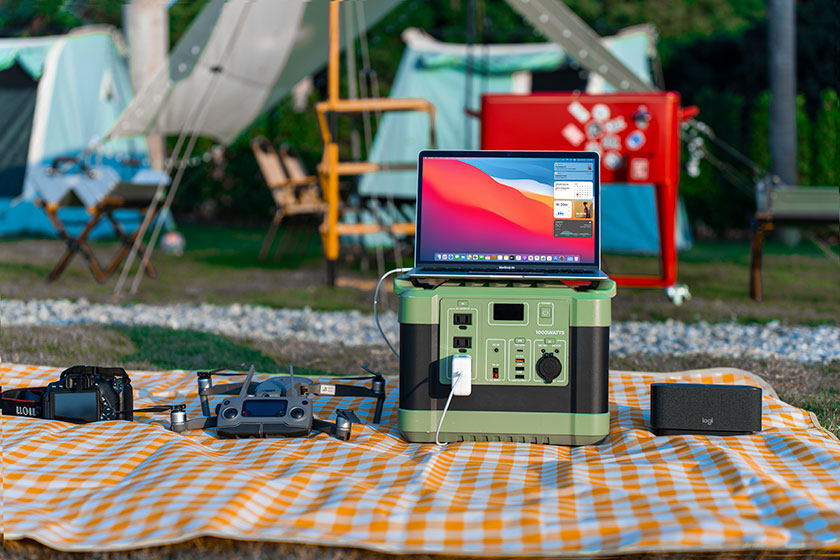While all the best Mobile Power Station may be used as a distant power source, they differ greatly in their internal components. When it comes to choosing a Mobile Power Station, consider the following factors.
Portability, capacity, lifespan, and features are what make certain models right for some and not others. The type of battery used will have a big impact on the first three. NCM batteries are lighter while LFP batteries have a longer lifespan.

Battery chemistries have moved away from the lead-acid ones found in cars, and as a result, are now much lighter and more efficient. We're still not at the point where your house can run off of a battery the size of your phone, but we're getting a lot closer. There are plenty of things you can use with today's Mobile Power Stations that you couldn't have done feasibly a few years ago.
The tradeoff between weight and capacity has reached the point where you can pick up a battery that can power a TV for 24 hours. Smaller sizes you can take on a hiking trip may be able to power small appliances for a few hours. If lifting it up isn't necessary, bigger ones usually have wheels and can power large appliances and power tools for several hours.
How much electricity a Mobile Power Station can store is measured in watt-hours (Wh), which is one watt of electricity being used for (you guessed it!) one hour. If you turn on a 50W bulb for 10 hours, it uses 500Wh of energy.
So, let's say you're throwing an outdoor summer party for 3 hours and plan to bring:
• Iceless cooler (50 watts)
• Set of lights (25 watts)
• Slow cooker (75 watts)
All of the devices above add up to 150 watts, and for 3 hours would use 450Wh. A 450Wh Mobile Power Station wouldn't cut it though. With about 10-20% of the battery being lost when powering devices, it would take a 500Wh-560Wh Mobile Power Station to make this party happen. That's if you use if from 100% down to 0%, which is a no-no for battery health. If you plan to keep it in the 80%-20% sweet spot for maximum lifespan, you'd want a portable power station with around 800Wh-900Wh.

Seeing a battery as an investment is sort of a new concept. One of the things to compare is the cycle life. It's will be stated as something like 500 cycles to 80% capacity.
500 cycles – All rechargeable battery's subtly lose capacity over their lifetime, and part of this is due to their charge/discharge cycles. A full cycle is when the battery has been used a total of 100% – if you use 30% today, 50% tomorrow, and 20% the next day, that's one cycle. That's regardless of if/how much you recharged it on these days.
80% capacity – After the 500 cycles, then what? Your battery isn't at the end of it's life, it's only at 80% of it's original health. A battery that could once power a light for 100 hours, would only be able to power it for 80 hours. When comparing lifespans between Mobile Power Stations, it's important the health percentage is the same: a battery that's 500 cycles to 80% capacity is better than a battery that's 500 cycles to 50% capacity.
At the very minimum, Mobile Power Stations should have USB and AC outlets. From there, the bells and whistles you may come across are a variety of outlets, various ways to charge, app functionality, expandable capacity (i.e., adding battery packs), and other available accessories (e.g., home integration kits and smart generators).
When it comes to Mobile Power Stations, there are various ways to get them charged. You can use the USB-chargeable or get it charged with a car's 12V DC power connection capacity. However, the fastest and effective means is the standard wall socket. In essence, a Mobile Power Station is a huge battery reserve. Unlike a generator, which provides the same amount of power as long as it operates, even the greatest portable power station depletes with time.
The battery type matters. The battery type is critical to the operation of your Mobile Power Station. A longer-lasting battery can be utilized to provide extended runs between recharging.
The cost of the Mobile Power Station is the heart of the purchase decision. The prices of mainstream battery power stations on the market range from 30 to 3000 USD, you can find even more expensive ones that will provide you with hours of power.
There are many Mobile Power Stations on the market today. However, it can be confusing to find the best one. The best Mobile Power Station for you is the one that will fit your needs and budget the most.